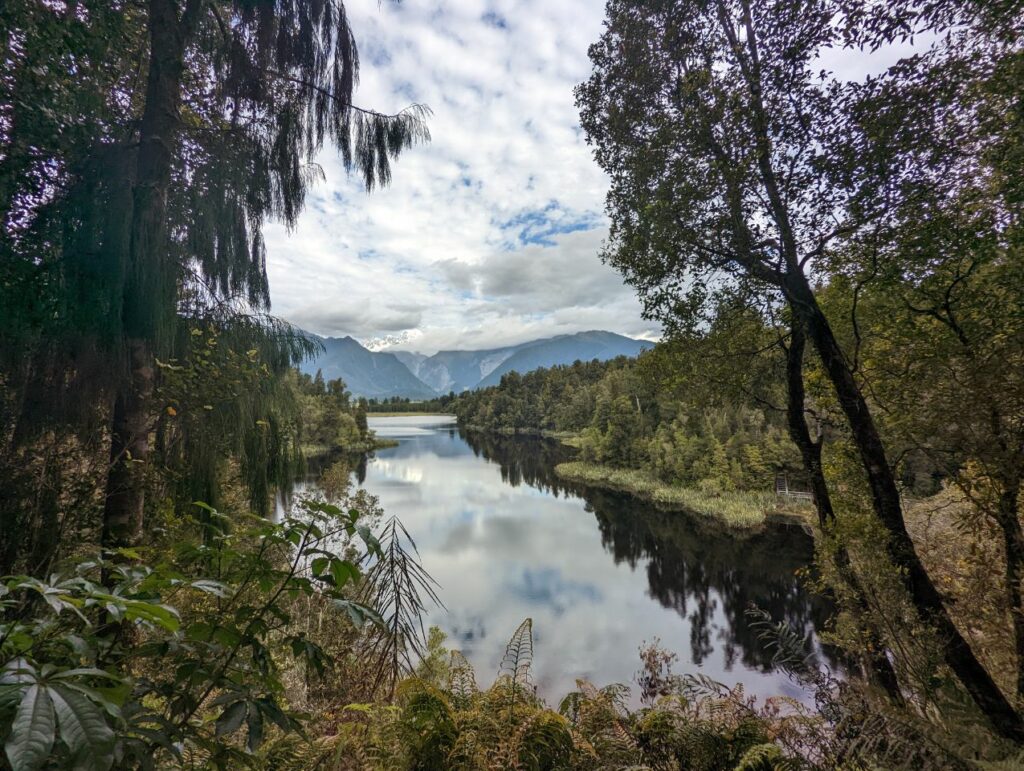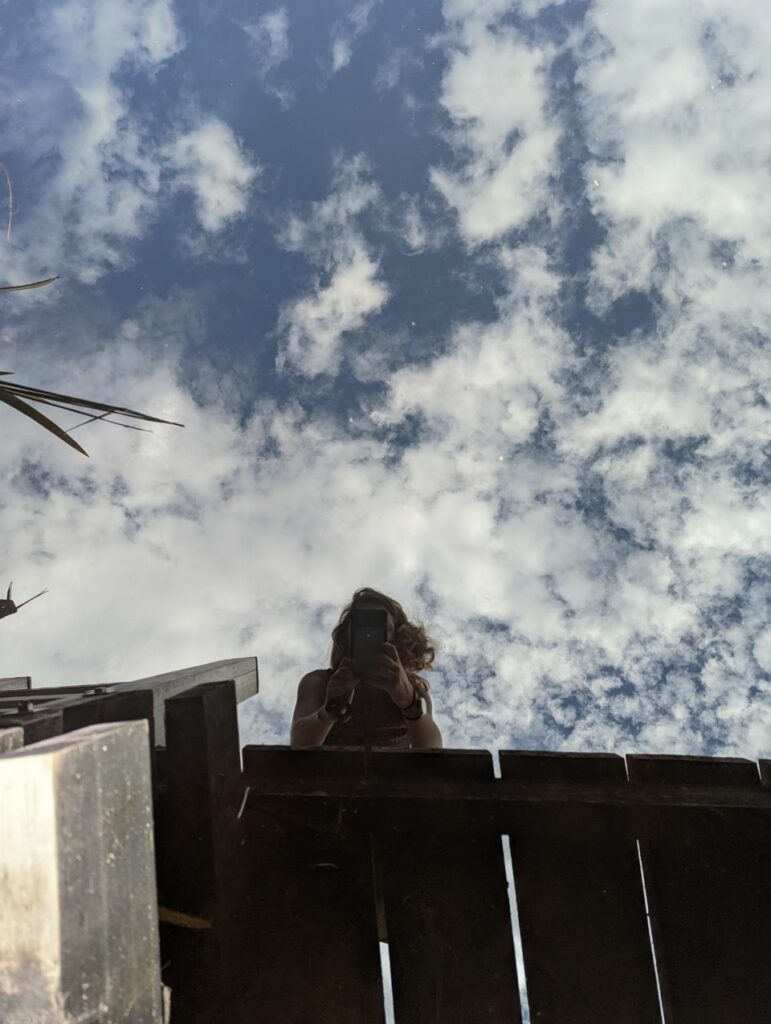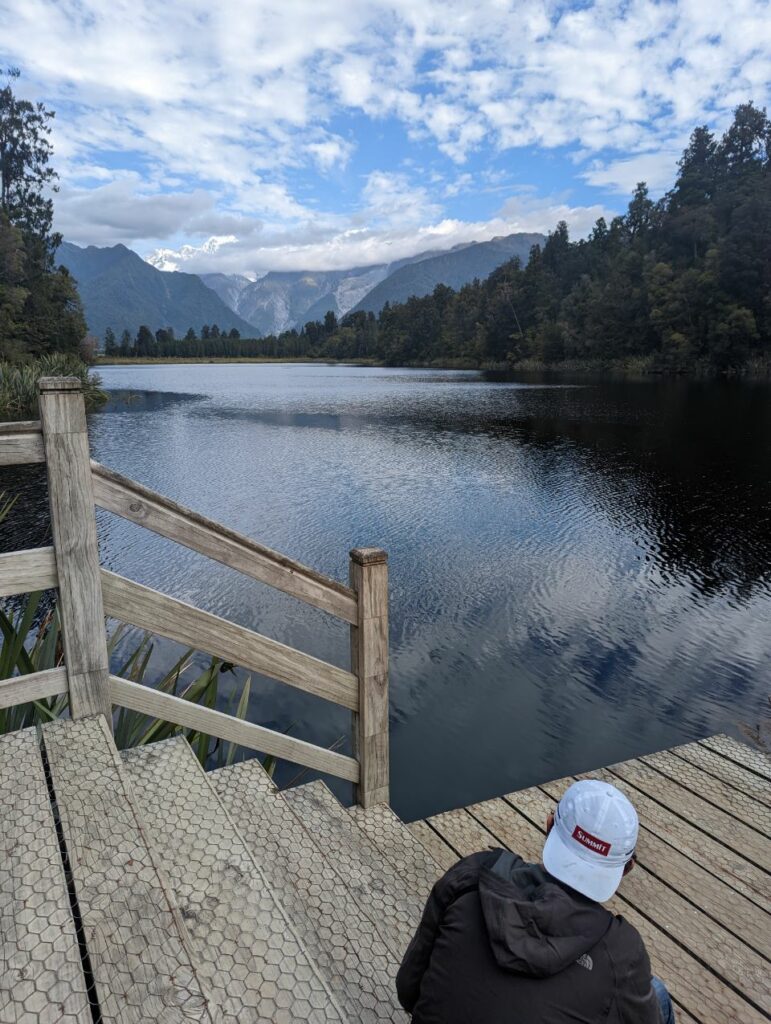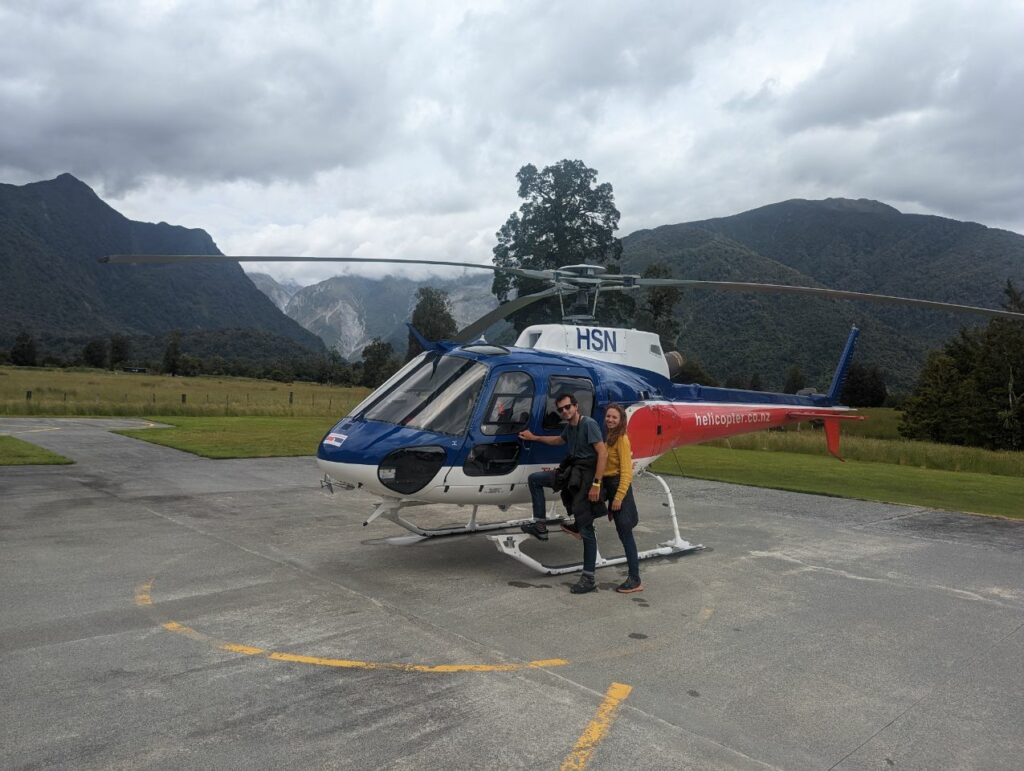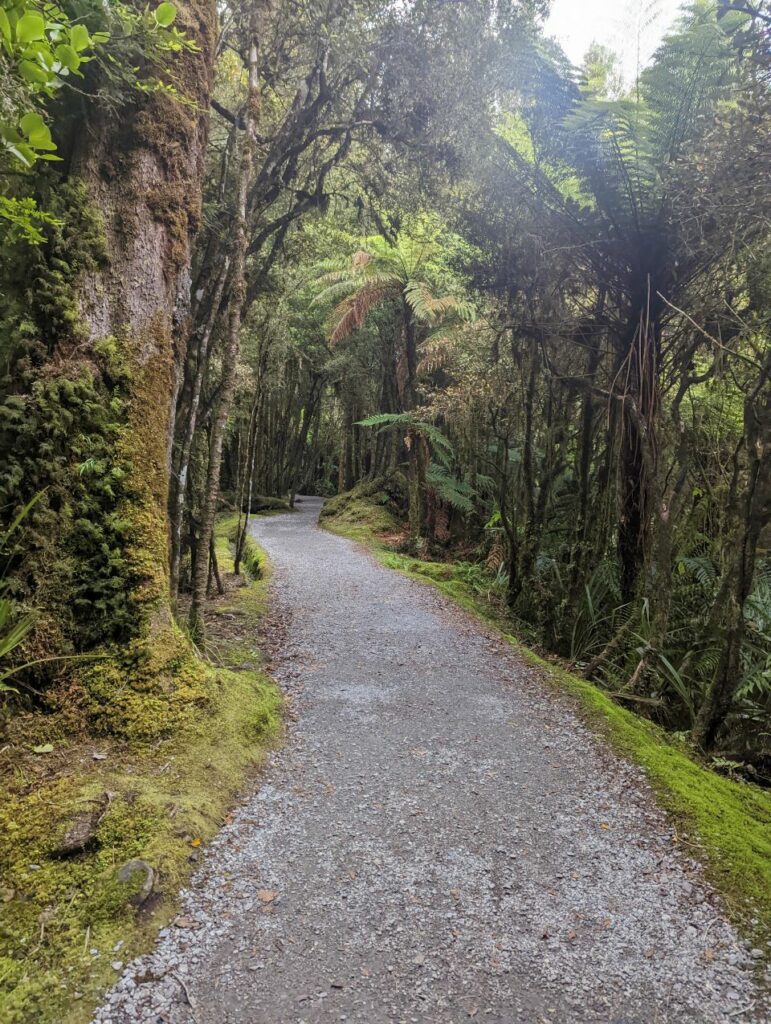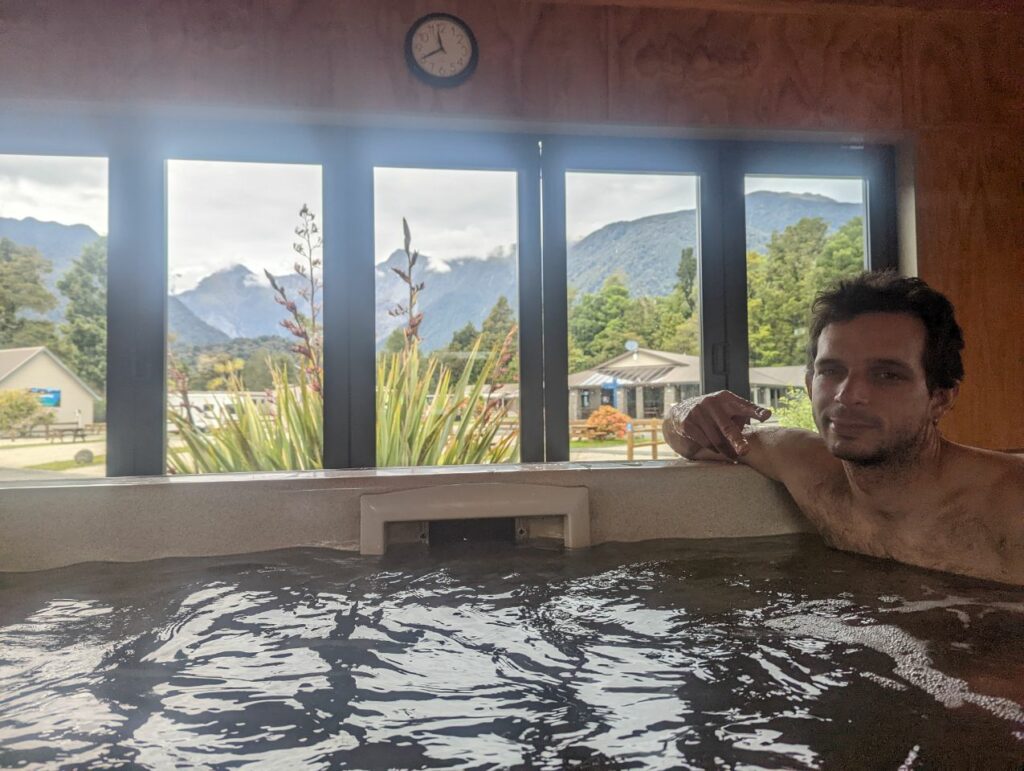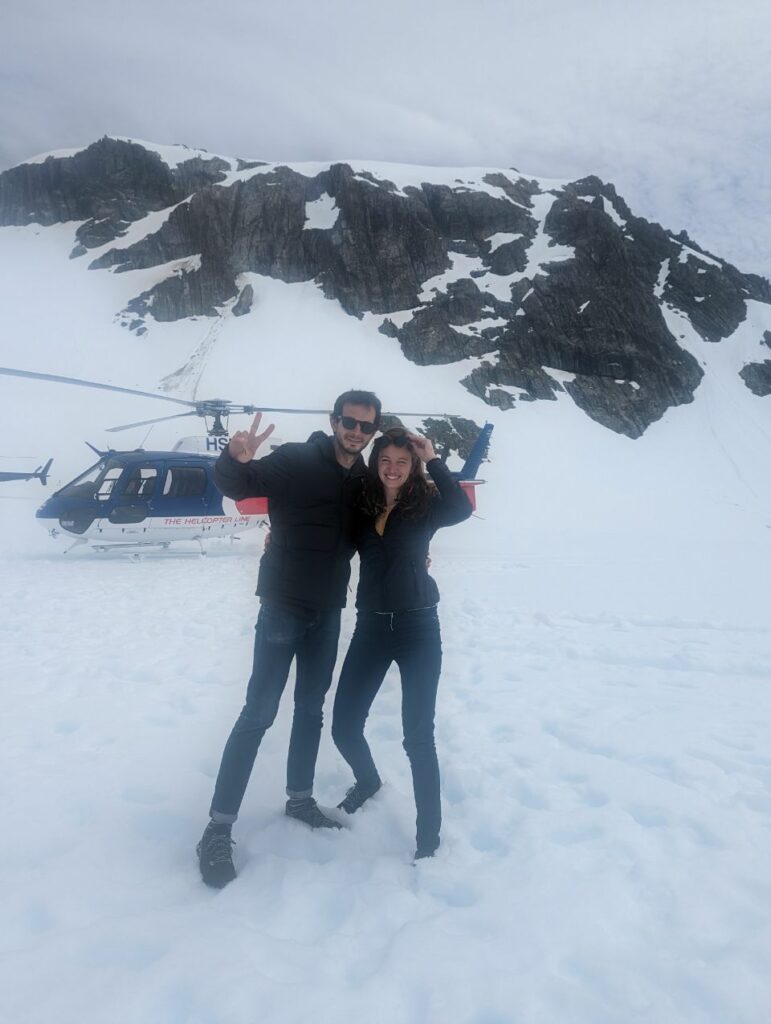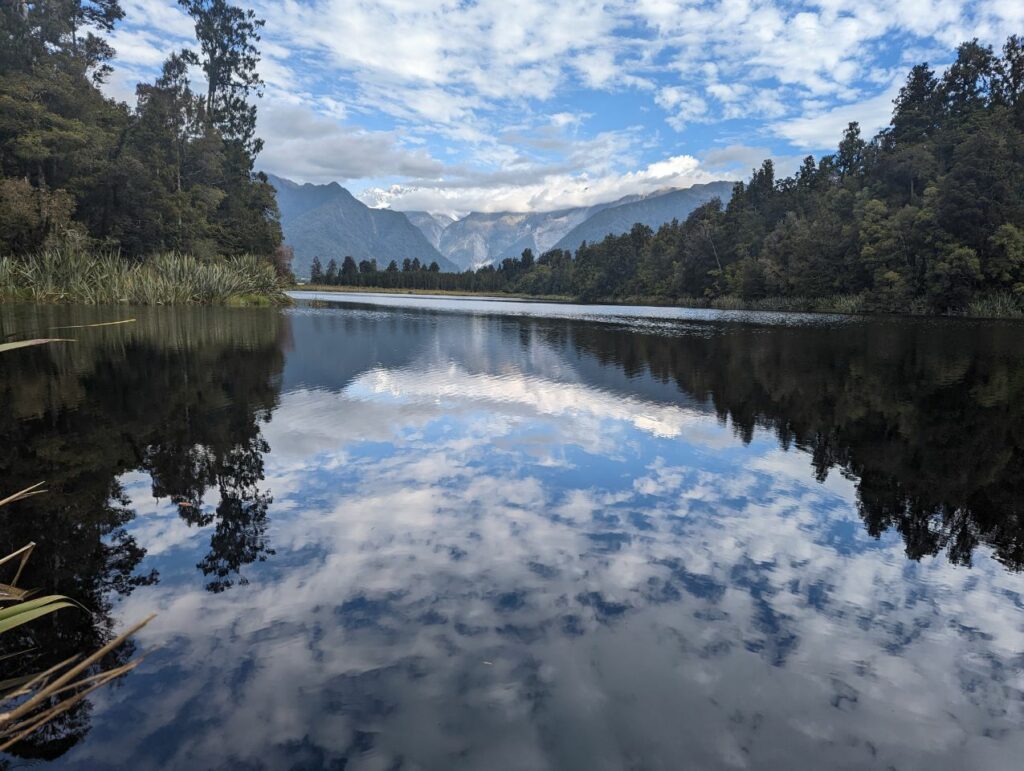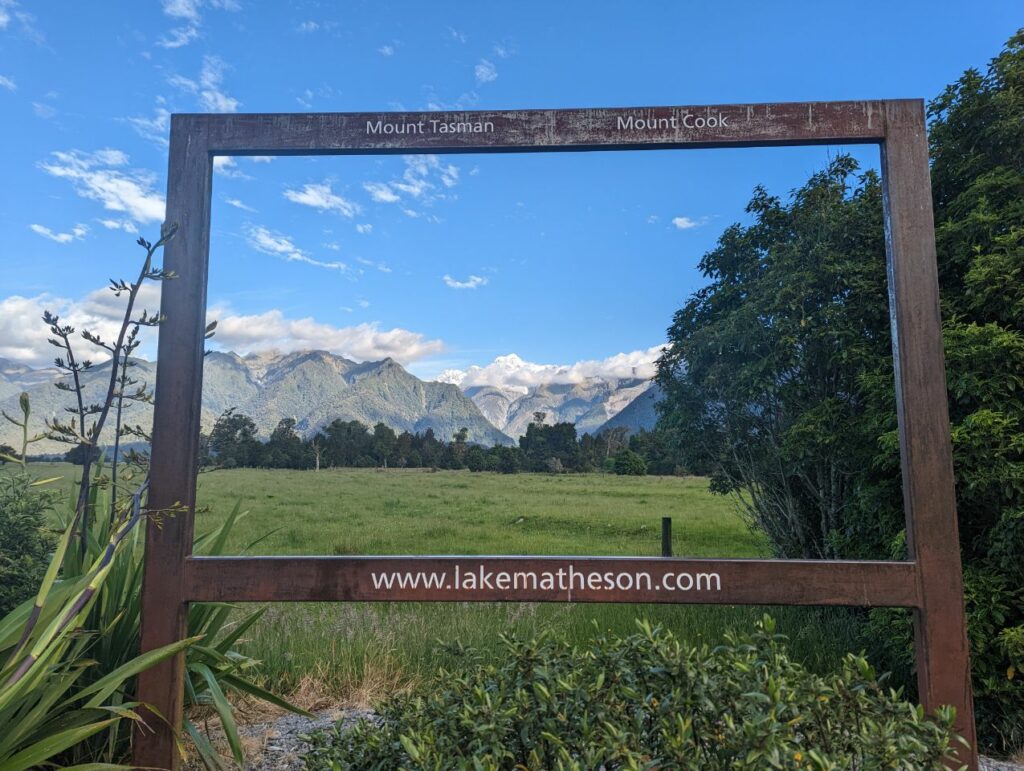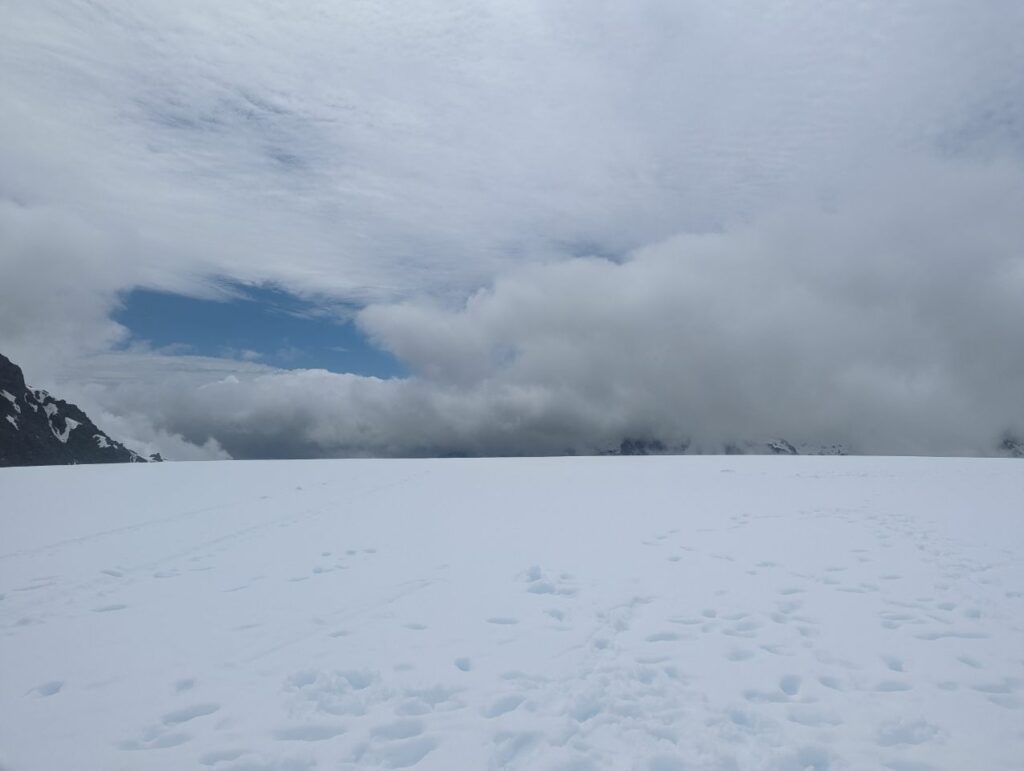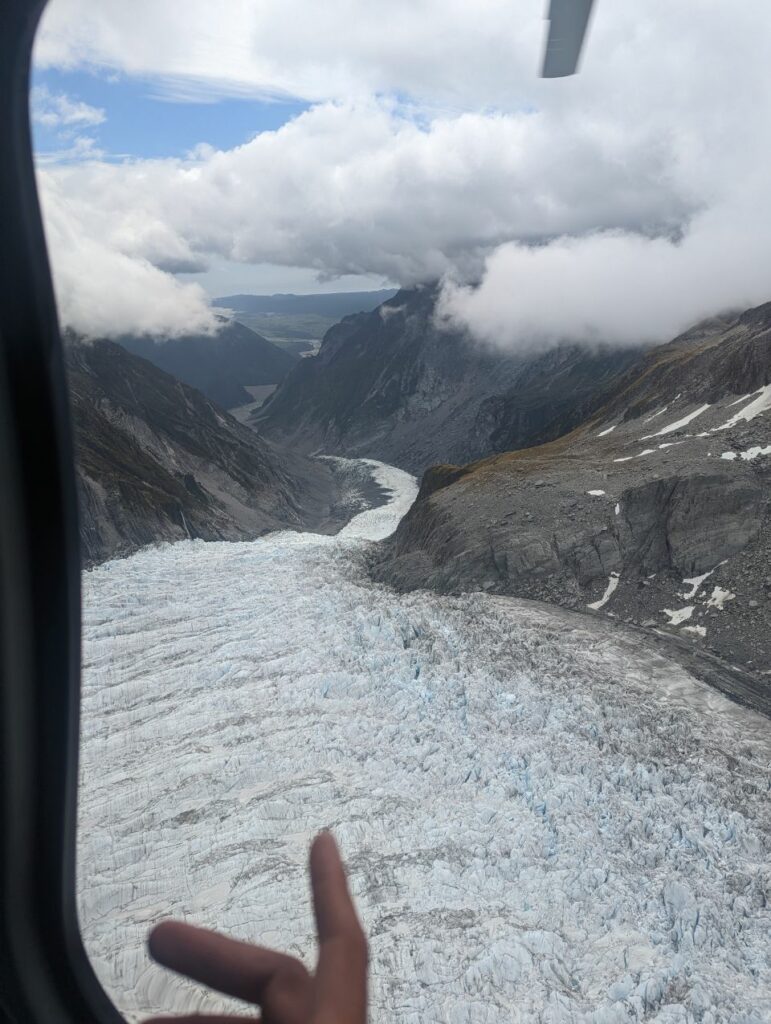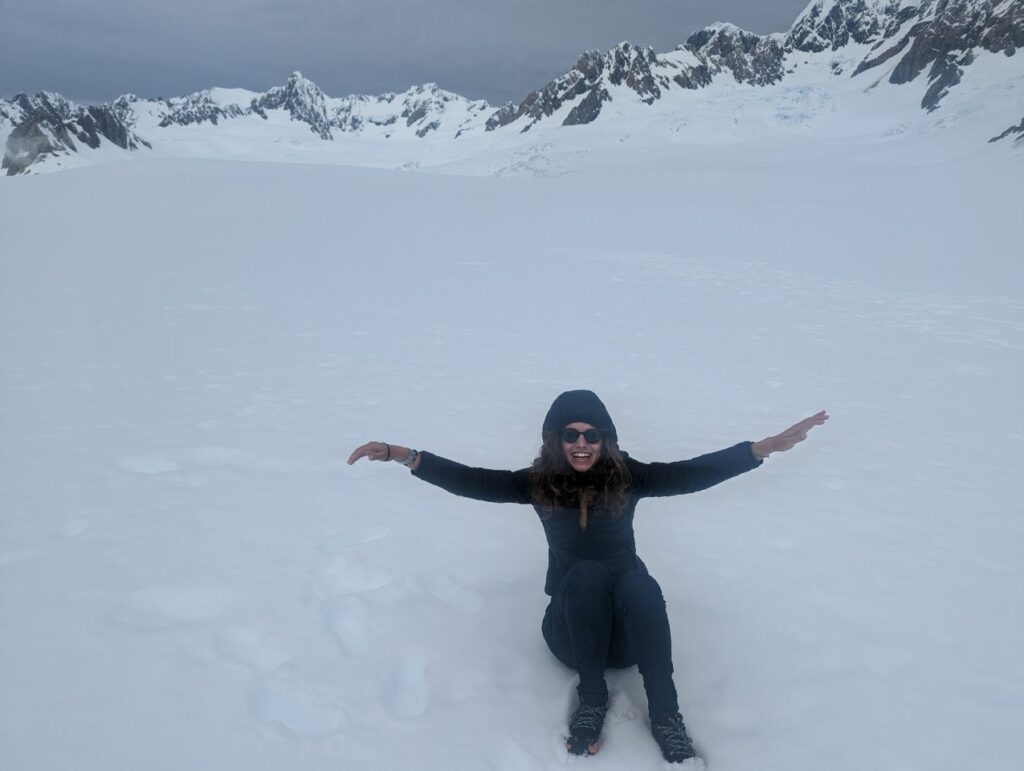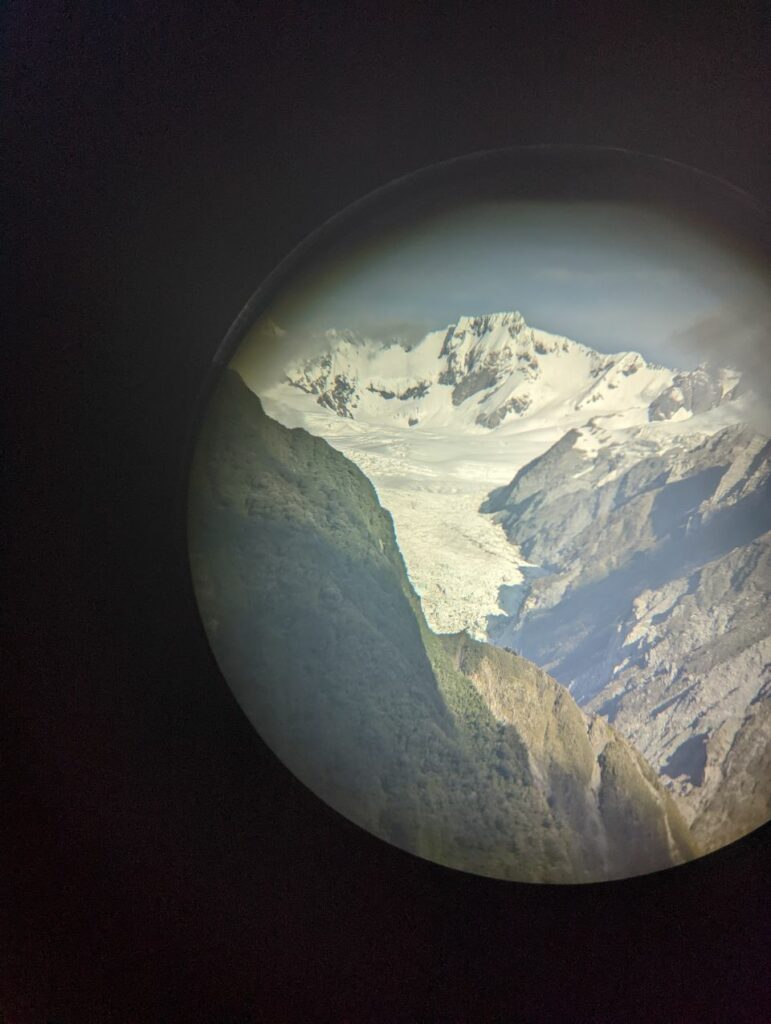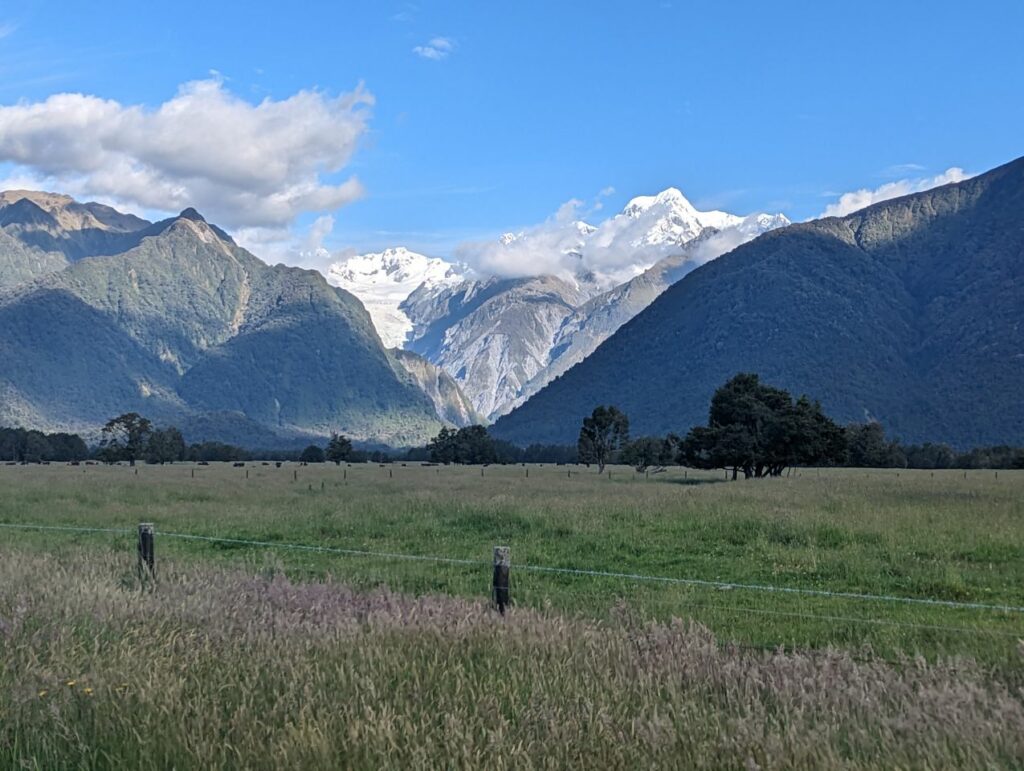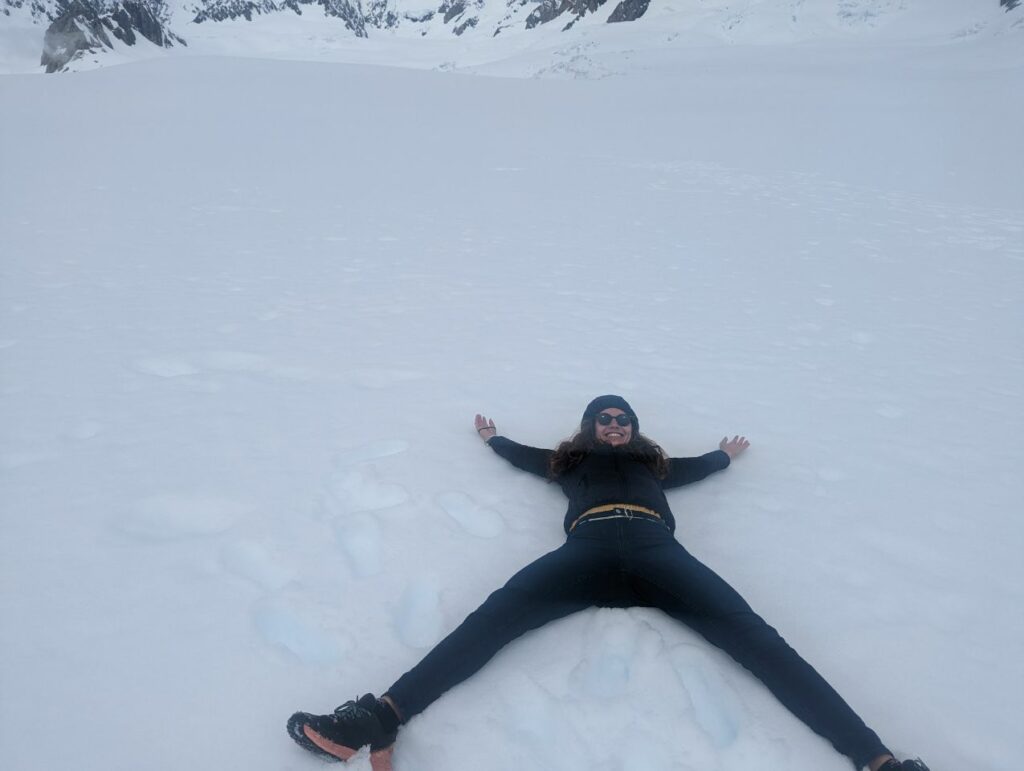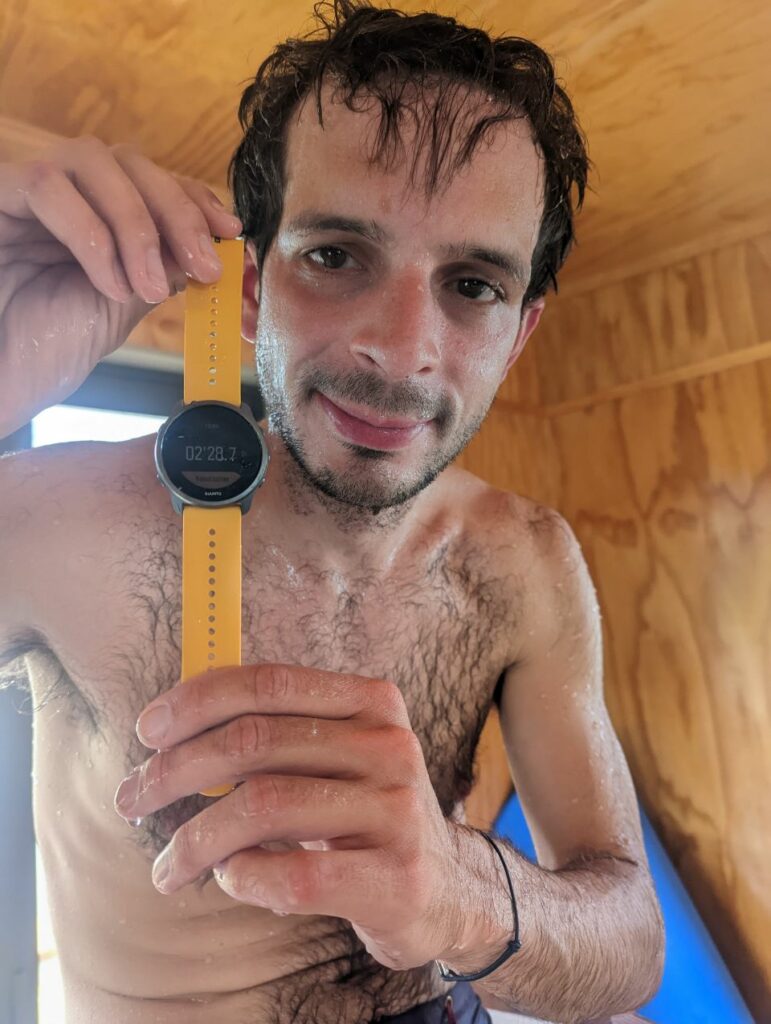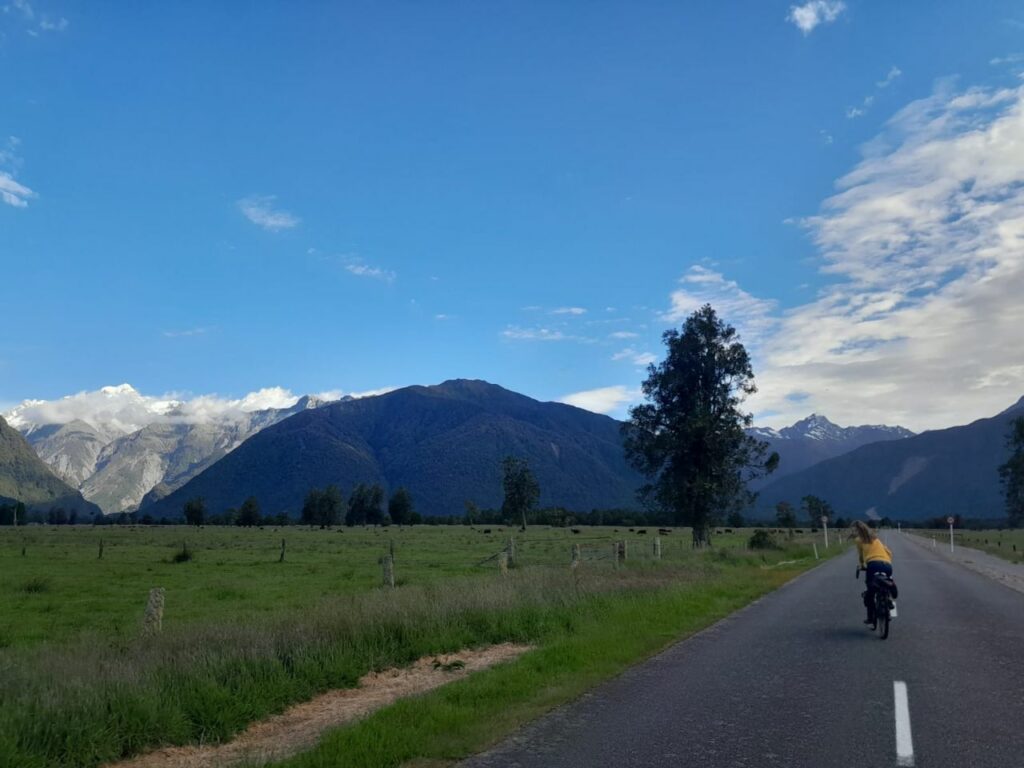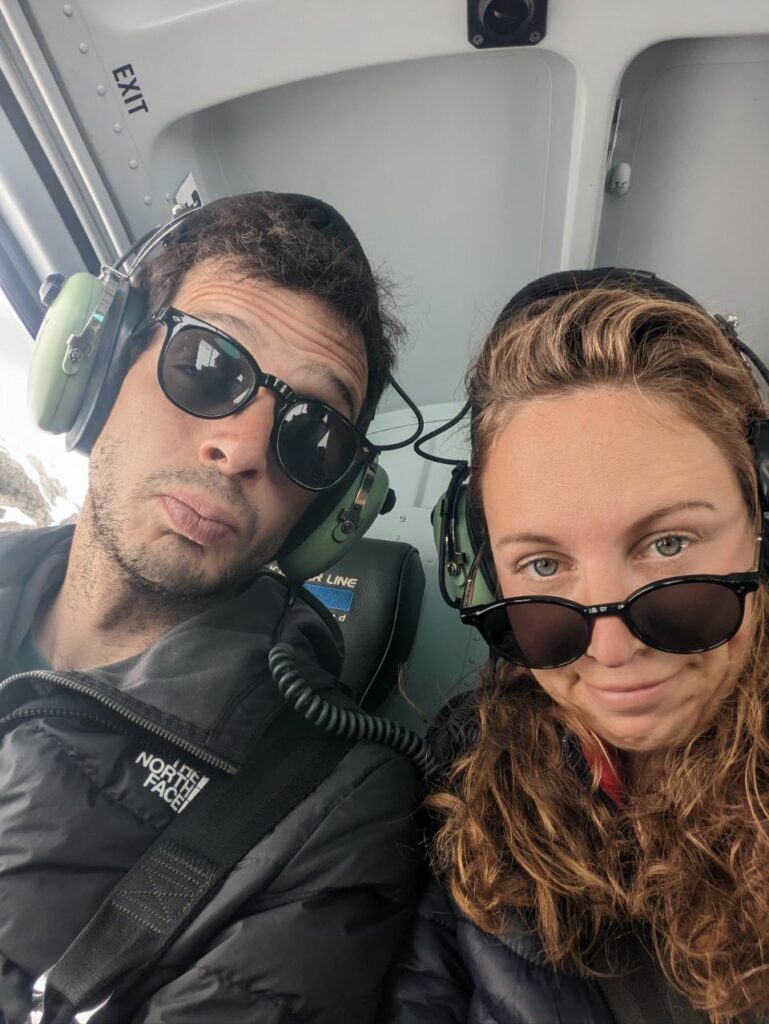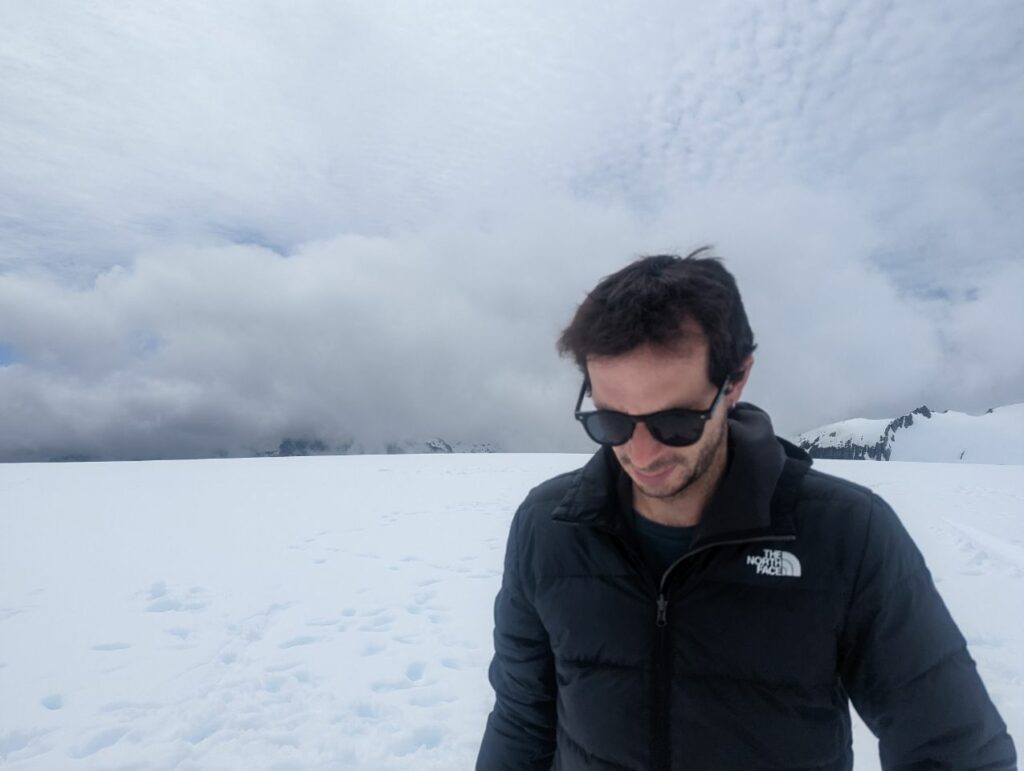Début de la journée assez triste avec la défaite de la Croatie
Du coup on se réconforte au sauna du camping où Martin bat enfin son record d’apnée (2’28 »)
On va ensuite gravire le glacier (à bord d’un hélico ^^, le seul moyen pour y accéder)
Vue incroyable sur le glacier et on se pose tout en haut pour jouer un peu avec la neige
Aubretour on boit un coup avec nos amis cyclistes néerlandais et allemands qui on fait le tour du glacier avec nous.
Puis on se rend au lac miroir mais un peu de vent pour voir le parfait effet miroir c’est quand même juste fou la vue !
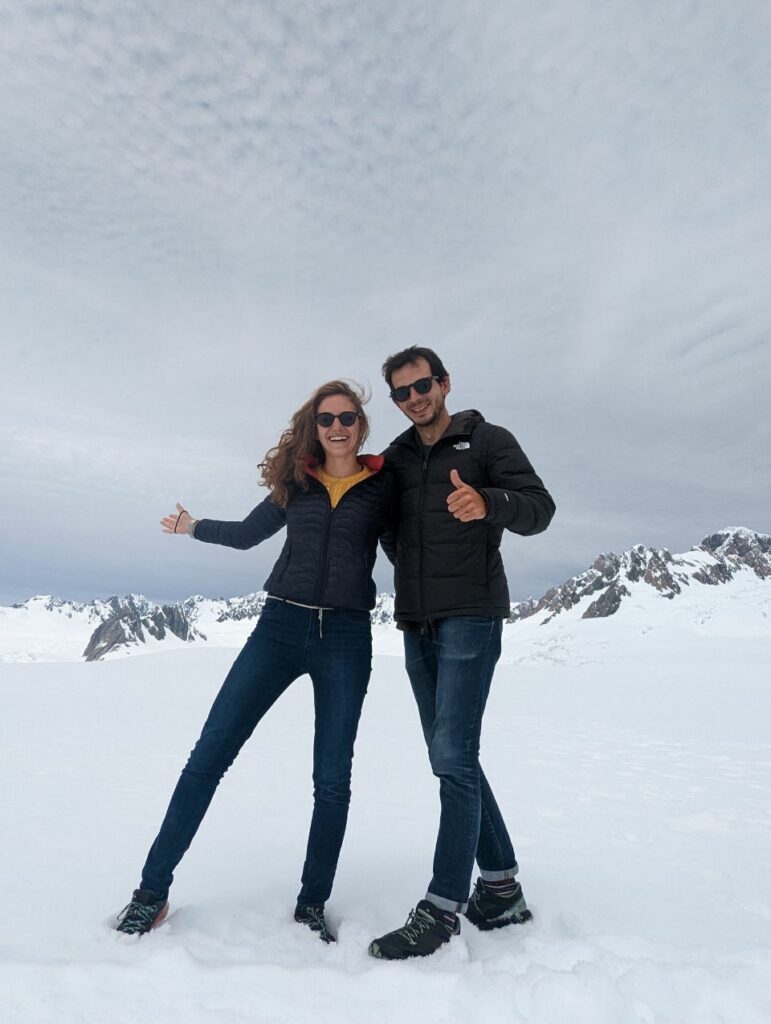
FOX GLACIER
14th December 2022
Fox Glacier (Māori: Weheka), called Weheka until the 1940s, is a village on the West Coast of the South Island of New Zealand. The village is close to the eponymous Fox Glacier / Te Moeka o Tuawe.
Location
Bruce Bay is 46 km (29 mi) to the south-west of the village, and Franz Josef / Waiau is 23 km (14 mi) north-east. State Highway 6 runs through the village.[1][2] The village is 6 km (3.7 mi) from the eponymous Fox Glacier, and a similar distance from Lake Matheson.[3]
Fox Glacier is primarily a service centre for tourists, although it also services the local farming community. The village is served by the Fox Glacier Aerodrome.
Name
The village was known as Weheka until the 1940s, when the name of the post office was changed to Fox Glacier,[4] after the nearby glacier of the same name. The glacier was given the name of Fox Glacier in 1872 after a visit by then New Zealand premier, William Fox.[5]
History
The origins of the settlement lie 20 kilometres (12 mi) away, on the coast at Gillespies Beach, which underwent a gold rush in the 1860s. At that time, Gillespies was briefly the third-largest town on the West Coast. As the amount of gold being recovered declined, most of the population, including the Sullivan family of miners, moved on. Patrick Sullivan moved inland with his friend Fred Williams to try farming in an area known as the Weheka Valley.[6] Julia Sullivan married Fred Williams in 1893 and built a farmhouse on the Cook River flats near the present site of the settlement. By the early 1900s large amounts of forest on the flats had been cleared and become farmland.[6]
Access to the settlement was still via the sea: boats would land at Gillespies Beach, and goods were unloaded in the surf and carried by horse and dray back to Weheka. The road north to Waiho (now Franz Josef / Waiau) was very poor: surveyor Charlie Douglas wrote in the 1890s, « …when I came through that way, I left the track and took to the bush as being far better walking. » By 1903 it had been improved and Dr Ebenezer Teichelmann described it as a good horse track.[6]
In the 1920s Westland began to be marketed as a scenic wonderland for tourists.[7] For years the Williams and Sullivan families had offered hospitality to tourists coming to see the glacier in their own homesteads, but in 1926 Mick and Jack Sullivan decided to build accommodation for the increasing numbers of visitors. They established a sawmill and built the Fox Glacier Hostel, which opened on 20 December 1928. It had its own hydroelectric power generator and was supplied by the Sullivan farm. It had 40 bedrooms, designed to accommodate up to 100 guests, as well as four parlours and a large dining room for up to 70 diners.[7]
The hotel became the centre of activity in the area, running trips to Lake Matheson where visitors could take a boat to photograph the lakes famous reflections. Horses were supplied to tourists who wanted to visit the remains of the gold-mining settlement at Gillespies Beach. Mary Kerr (née Sullivan) ran the hotel, and essentially all local tourism, from the 1950s until her death in 1986.[6]

